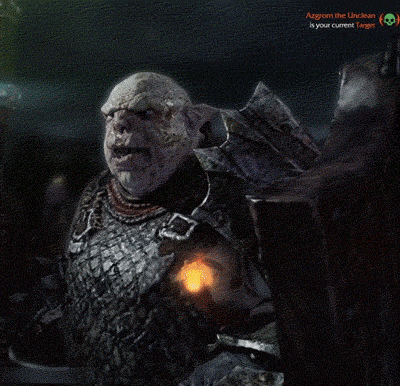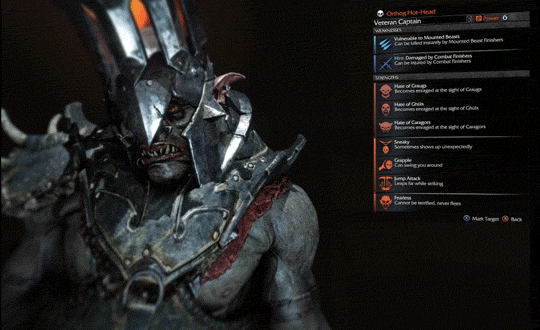



Middle-Earth: Shadows of Mordor (2014)
The open world fighting genre has been a source of a lot of experiments in emergent gameplay. Last year’s Shadows of Mordor is a good example. Other people have explained the nemesis system in detail, so I’ll just summarize: any orc that kills you gets promoted to be a captain in Sauron’s army. If you kill them, they have a chance to come back, showing off their new procedurally applied scars. (Eventually you’ll either decapitate them or they’ll start wearing a sack over their head.)
Since any orc you encounter has the potential to become an important character in your game, they needed a way to make a lot of very distinct orcs on the fly. Enter procedural generation. The game has hundreds of procedurally generated orcs, any one of which might find his name being chanted as he deals you the killing blow. While you’ll tend to see patterns, there’s enough variety in the system that you’ll be most of the way through the game before you see all of the major possibilities, like the guy with a torch on his head, or the one who just grunts at you, or the singer, or the one who has a pet name for you.
The procedural generation gives the game a way to converse with you. Get killed by a lot of arrows and the captains’ ranks will start filling up with archers, each with his own generated strengths and weaknesses. Lose a fight to a captain and that captain will go up in rank.
It’s almost a pity you end up killing them, since there’s so few games that have managed to get you so emotionally invested in your relationships with randomly generated NPCs.

This guy right here is my nemesis. He keeps showing up, shooting me, calling me names and then leaving me for dead because he can’t be bothered to finish me off.
